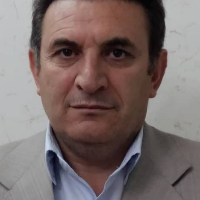Comparing the accuracy of various classification methods for preparing land use maps (case study: Razvanshahr city)
With the development of various methods in the field of classification of satellite images and the detection of changes, especially in recent decades, the selection of the best and most correct method for preparing land use and land cover maps in different regions has grown day by day. The main goal of this research is to compare the accuracy of various classification methods for preparing land use maps in Razvanshahr city. For this purpose, seven land use classes in Razvanshahr city (including pastures, residential areas, roads, agricultural lands, rivers, coastal areas and forests) were determined using satellite images. Then, educational samples were collected from the region using satellite images, Google Earth images and field visits. In the next step, by using the characteristics of the images, the land use classes in the study area were determined and after determining the resolution of the classes, the classification was done using maximum likelihood (MLC), support vector machine (SVM), and minimum mean distance (MD). The evaluation results of these three methods showed that the machine vector method has more accuracy than other methods (overall accuracy 92.60, kappa coefficient 0.87 for the year 2000 and overall accuracy 97.16 and kappa coefficient 0.93 for 2022). . Therefore, the results of this research can be used to prepare a land use map with higher accuracy by using the support vector method in environmental and natural resource assessment works in areas with similar conditions.
-
Investigating the developments and geomorphological development of Agh Gol wetland
*, Mahrokh Sardashti
Journal of Extension and Development of Watershed Managment, -
Investigating changes in the forest cover Ghaleroodkhan Fuman watershed and its effects on watershed erosion using object-oriented classification and MABAC multi-criteria algorithm
*, Sayyad Asghari, Hossein Hajatpour
quantitative geomorphological researches,


